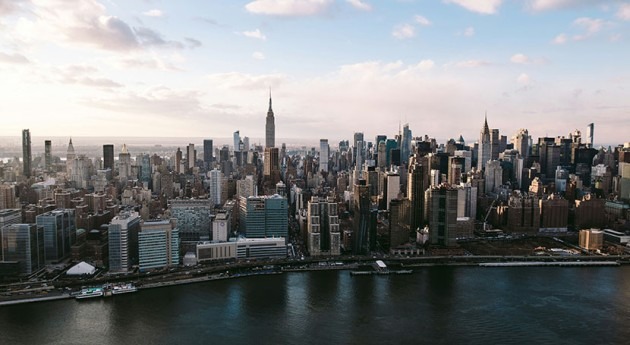Sea level rise has already put coastal cities on notice thanks to increasing storm surges and even sunny day flooding at high tide. These challenges will continue to grow because global projections point to a mean sea level rise of at least one foot above year-2000 levels by the end of this century.
However, many cities are facing another factor making them even more vulnerable to rising waters: land subsidence.
The three of us – Pei-Chin Wu, Meng (Matt) Wei and Steven D'Hondt – are scientists at the University of Rhode Island Graduate School of Oceanography working with the U.S. Geological Survey to research challenges facing waterfront cities. Our findings indicate that land is sinking faster than sea levels are rising in many coastal cities throughout the world.
By using radar images of the Earth’s surface collected from orbiting satellites, we measured subsidence rates in 99 coastal cities worldwide. These rates are highly variable within cities and from city to city, but if they continue, many metropolises will experience flooding much sooner than projected by sea level rise models.
Cities in South, Southeast and East Asia are seeing the most rapid rates of subsidence.
Indonesia, for example, is moving its capital 800 miles from Jakarta to Nusantara in large part because Jakarta is sinking at an alarming rate due to groundwater extraction.
Other regions are not immune. Our research with Tom Parsons of the U.S. Geological Survey found that most of New York Cityis sinking between 1 to 4 centimeters per year due to a combination of glacial rebound and the weight of its more than 1 million buildings. In a city where sea level is projected to rise between 8 and 30 inches by 2050, subsidence further increases its vulnerability to coastal storms.
In the U.S., most of the cities on the Atlantic coast are subsiding due to glacial rebound. Even if the rate is low at minus-1 millimeter per year, it should be accounted. Other cities in the U.S., especially in the Gulf of Mexico, including Houston and New Orleans, also face subsidence.
Governments around the world are facing the challenge of coastal areas that are subsiding, and there is a shared global challenge of mitigation against a growing flooding hazard.
While our research continues to evolve – for example, by using machine learning to improve our monitoring capability – we urge city planners, emergency managers and other decision-makers to account for subsidence in the plans they are making today to prepare for the impacts of rising sea levels in the future.
![]()
Pei-Chin Wu, Ph.D. Candidate in Oceangraphy, University of Rhode Island; Meng (Matt) Wei, Associate Professor of Oceanography, University of Rhode Island y Steven D’Hondt, Professor of Oceanography, Graduate School of Oceanography, University of Rhode Island
This article is republished from The Conversation under a Creative Commons license. Read the original article.




